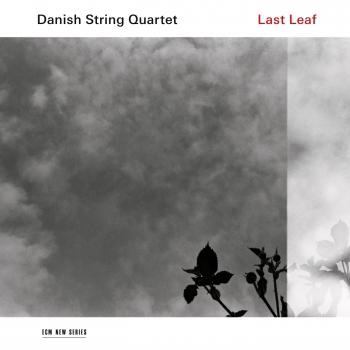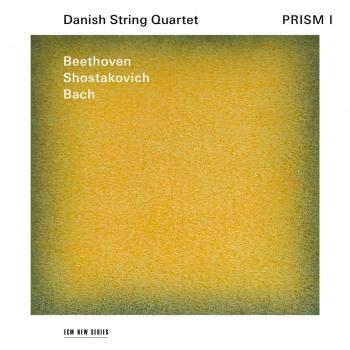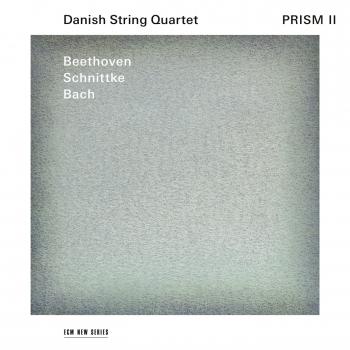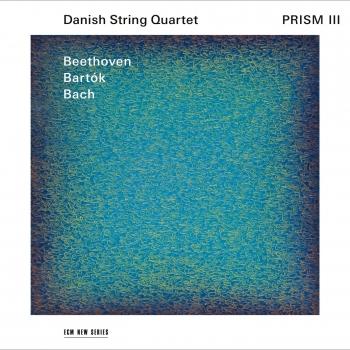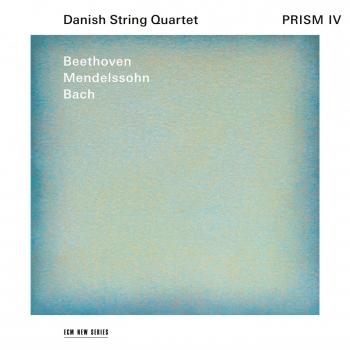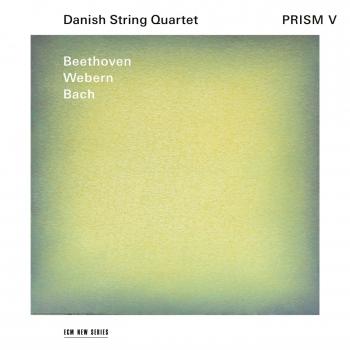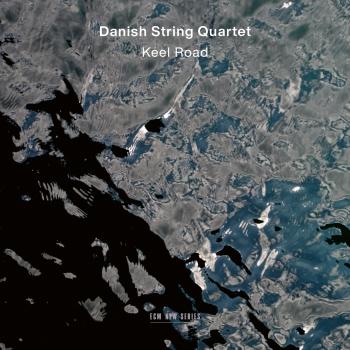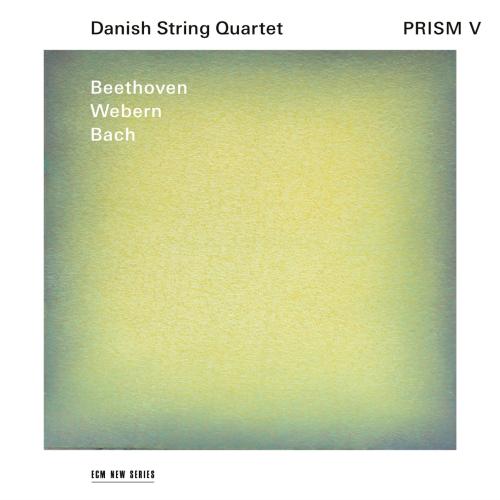
Prism V Danish String Quartet
Album info
Album-Release:
2023
HRA-Release:
14.04.2023
Label: ECM New Series
Genre: Classical
Subgenre: Chamber Music
Artist: Danish String Quartet
Composer: Johann Sebastian Bach (1685-1750), Ludwig van Beethoven (1770-1827), Anton Webern (1883-1945)
Album including Album cover Booklet (PDF)
I`m sorry!
Dear HIGHRESAUDIO Visitor,
due to territorial constraints and also different releases dates in each country you currently can`t purchase this album. We are updating our release dates twice a week. So, please feel free to check from time-to-time, if the album is available for your country.
We suggest, that you bookmark the album and use our Short List function.
Thank you for your understanding and patience.
Yours sincerely, HIGHRESAUDIO
- Johann Sebastian Bach (1685 - 1750): Vor deinen Thron tret' ich, Chorale Prelude, BWV 668:
- 1 Bach: Vor deinen Thron tret' ich, Chorale Prelude, BWV 668 (Arr. for String Quartet) 04:58
- Ludwig van Beethoven (1770 - 1827): String Quartet No. 16 in F Major, Op. 135:
- 2 van Beethoven: String Quartet No. 16 in F Major, Op. 135: I. Allegretto 06:52
- 3 van Beethoven: String Quartet No. 16 in F Major, Op. 135: II. Vivace 03:16
- 4 van Beethoven: String Quartet No. 16 in F Major, Op. 135: III. Lento assai, cantante e tranquillo 07:40
- 5 van Beethoven: String Quartet No. 16 in F Major, Op. 135: IV. Der schwer gefaßte Entschluß. Grave, ma non troppo tratto – Allegro 07:25
- Anton Webern (1883 - 1945): String Quartet:
- 6 Webern: String Quartet 18:01
- Johann Sebastian Bach: The Art of Fugue, BWV 1080:
- 7 Bach: The Art of Fugue, BWV 1080: Contrapunctus 14. Fuga a 3 Soggetti 12:14
Info for Prism V
The Danish String Quartet bring their highly acclaimed Prism project to its conclusion. In each volume of this series a particular Bach fugue is connected to a late Beethoven quartet which, in turn, is connected to a quartet by a later master: “A beam of music is split through Beethoven’s prism,” in the Danes’ words. “The whole approach invites active, committed listening,” The Guardian observed. “The group plays with virtuosity, intensity and tenderness.” The project has been eight years in the making. Now on the fifth and final volume, Johann Sebastian Bach’s chorale prelude Vor deinen Thron tret ich hiermit “opens up like a flower” (as Paul Griffiths writes in the liner notes) to preface Ludwig van Beethoven’s String Quartet No. 16 in F major. Anton Webern’s early String Quartet, composed in 1905 – and inspired both by Beethoven and Schoenberg – follows, and the programme returns to Bach with Contrapunctus 14 from The Art of the Fugue.
“The whole approach invites active, committed listening. The group plays with virtuosity, intensity and tenderness.” (Fiona Maddocks, The Observer)
From conception to completion, the Danish String Quartet’s Prism project has been almost eight years in the making: “our string quartet ritual of passage”, as the players now look back upon it, a process of discovery. Lines of connection are drawn in the five Prism volumes, from a Bach fugue through one of the late Beethoven quartets to the music of a subsequent composer: “A beam of music is split through Beethoven’s prism,” in the Danes’ words.
Throughout the series the DSQ have emphasized that “late Beethoven is not a disconnected island in music,” but rather “a continuation from Bach and the old masters,” which, furthermore, points toward the future. Previous recordings in the series have addressed the influence of late Beethoven on Shostakovich, Schnittke, Bartók and Mendelssohn. On Prism V, Bach and Beethoven are heard alongside Anton Webern, and musical affinities are newly illuminated.
As the group remark in a performers’ note on Prism V, “The music on these albums is delightfully complex and open-ended…A late quartet by Beethoven is an incredibly intricate piece of art. One can spend a lifetime zooming in on every inch of the score and still find new details. Each bar, each moment is a maze of possible interpretational paths…”
On the fifth and final Prism volume, Johann Sebastian Bach’s chorale prelude Vor deinen Thron tret ich hiermit “opens up like a flower” (as Paul Griffiths writes in the liner notes) to preface Ludwig van Beethoven’s String Quartet No. 16 in F major. Anton Webern’s early String Quartet, composed in 1905 – and inspired both by Beethoven’s op. 135 and Schoenberg’s Verklärte Nacht – follows, and the programme returns to Bach with Contrapunctus 14 from The Art of the Fugue.
The Danish String Quartet’s three Danish-born members, Rune Tonsgaard Sørensen, Frederik Øland and Asbjørn Nørgaard first played chamber music together in a music summer camp before they were even teenagers. In 2006 they made their first recordings as the Young Danish String Quartet, immediately attracting the attention of publications from Gramophone to the New York Times. In 2008, Norwegian cellist Fredrik Schøyen Sjölin joined the quartet, and the group has since gone from strength to strength, with repertoire embracing core classical and contemporary music, as well as folk music, which they also play with verve and commitment – as evidenced on their ECM album Last Leaf (2017). The group’s first ECM recording from 2015 comprised Thomas Adès’s Arcadiana, Per Nørgård’s Quartetto Breve, and Hans Abrahamsen’s 10 Preludes.
The DSQ’s Prism series of recordings was initiated in 2016 with the first volume incorporating Bach’s Fugue in E-flat major from The Well-Tempered Clavier, Beethoven’s String Quartet No. 12 and Shostakovich’s Quartet No. 15. The album received a Grammy nomination. Prism II features Bach’s B-flat minor Fugue from The Well-Tempered Clavier, Beethoven’s String Quartet Op. 130/“Große Fuge” Op. 133, and Alfred Schnittke’s String Quartet No. 3. (“A revelatory connected soundscape in which Beethoven’s introspection feels more unsettling than usual.” – BBC Music Magazine.) On Prism III the quartet interprets Bach’s C-sharp minor Fugue, Beethoven’s String Quartet Op. 131 and Béla Bartók’s String Quartet No. 1., prompting Stereophile to ask “What on Prism III is more exquisite, the music or the musicianship? The question is beside the point when you’re dealing with the exalted level of refinement, restraint, and elegance that the Danish String Quartet brings to the great music of Beethoven, Bartók, and Bach.” Prism IV with Bach’s G minor Fugue, Beethoven String Quartet Op. 132 and Mendelssohn’s String Quartet No. 2 again netted much critical praise: “Imaginative programming and superb quartet playing make this an outstanding album,” The Strad declared. “Each of these works is intricately constructed using time-honoured devices such as fugues, and within that intervallic and motific liaisons which forge cogency and continuity. These are elements that the Danish Quartet palpably cherish.”
Prism V was recorded in Copenhagen, and produced by Manfred Eicher.
Danish String Quartet
Danish String Quartet
As a string quartet, we find ourselves at the core of the classical music world. On a daily basis we delve deeply into works by great masters such as Beethoven and Mozart, but we also play the occasional folk gig. Over the years we have been fortunate to study in many different places in masterclasses with renowned teachers and have had opportunities to perform in major concert halls across the world. Sometimes a friendly reviewer has written nice things about us too. We have participated in competitions and made some recordings as well. If you want to know more about all this stuff, check out the ‘press‘ page on our site, where you can download a PDF with all the text you could hope for.
Here’s a simpler story of the quartet: We are three Danes and one Norwegian cellist, making this a truly Scandinavian endeavor. We are often joking about ourselves being modern Vikings – perhaps a touch more harmless than our ancestors – we are not pillaging cities or razing the English coastline! We are simply your friendly neighborhood string quartet with above average amounts of beard.The three of us met very early in our lives in the Danish countryside at an amazing summer camp for enthusiastic amateur musicians. Not yet teenagers, we were the youngest players, so we hung out all the time playing football and chamber music together. During the regular school year we would get together often to play music and just have fun. We became best friends. In 2001, professor Tim Frederiksen of The Royal Academy of Music in Copenhagen got in touch with us and started coaching us on a regular basis. All of the sudden, at the ages of 15 and 16, we were a serious string quartet. It all happened so fast that none of us seemed to notice the transition.
Time passed and we grew up. We were enrolled at The Royal Academy of Music and our life as music students had begun. Funnily enough, none of us have any memory of our lives without the string quartet. In 2008 Norwegian cellist Fredrik joined in, generously adding to the amount of beard and general Vikingness of the group. We found him hidden away in a castle outside Stockholm. During his free time, Fredrik can be found fixing or sailing his sailboat somewhere in Scandinavia.The rest of us spend time with different hobbies – old cars, cooking, gaming, reading, playing, talking, and drinking. Yes, playing string quartets is our job, and yes it is hard work, but we mostly do it for pleasure, like we always did.There is so much amazing music to delve into, and our hope is to continue our travels through life and music together as a quartet. We want to be able to share our music with as many people as possible. And of course, the ultimate goal is to beat Valentin Berlinsky’s (Borodin String quartet) world record of “most years in the same chamber music group”. We will reach that goal around 2060 and on that day we will host a giant feast – you shall all be invited!
Booklet for Prism V









